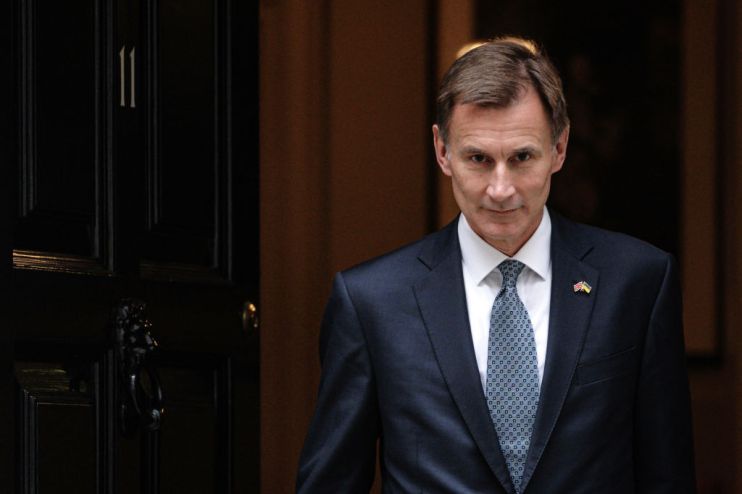Hunt hopes for an uneasy peace between the markets, voters and his own party

At the dispatch box, Jeremy Hunt opted to forgo the traditional Budget day whisky when he delivered the Autumn Statement. Given the task he was facing, you could forgive him for having a drink.
Burgeoning estimates of the fiscal black hole were well trailed by a Treasury desperate to manage expectations. The final figure was £55bn. Global economic conditions were offered as the central explanation: war in Ukraine, energy prices, global inflation. But it’s clear that the nation’s brief dalliance with Trussonomics made the chancellor’s task harder.
There were three groups the chancellor needed to appease last Thursday to get this government’s economic and political agenda on the right track.
The first audience was the markets. Restoring stability and economic credibility meant the welcome return of an OBR forecast, and a clear commitment to fiscal rules on debt and borrowing. Investors in Britain will have been assured by the coherence of the government’s plan. But many of the most difficult savings and tax rises come into effect after 2025, postponing the biggest challenges beyond the next election and adding to our debt burden.
The second audience was the public. Voters needed to see that this government is true to its word – recent Onward polling found that the top three words people used to describe the Conservatives were “dishonest”, “untrustworthy”, and “self-serving”. This made sticking to key manifesto pledges, such as the pensions triple lock and keeping headline tax rates down, all the more important. But as straight-talking as Hunt was about the trade-offs required, the trust deficit left him even less wiggle room. And there’ll need to be some more hard truths with core Tory voters in the next manifesto about the unsustainability of a model that benefits the old far more than the young.
Voters also needed to know that the burden of the chancellor’s measures would fall on the broadest shoulders. And it was on this that the Statement was surprisingly rosy. This was no return to 2010s austerity, as some had feared. Benefits and the National Minimum Wage going up with inflation. Higher earners paying increased tax through a lower 45p rate threshold. Energy companies coughing up more of their profits through an expanded windfall tax. And – in what looked suspiciously like a rabbit from a hat – extra cash for both schools and the NHS.
There are, however, huge challenges remain for the squeezed middle, with the OBR predicting major hits on living standards and house prices in the coming years. And further spending cuts earmarked for the future.
The third audience was sitting behind the chancellor. After the last few months, many worry that the Tory party is unmanageable. But some smart moves by the government, including clever Cabinet appointments, reduced the risk of backbench rebellions. Who could disagree with limited spending increases on defence if Ben Wallace is happy, or with missing our 0.7 per cent target for international aid spending if Andrew Mitchell is on board? And commitments to protect capital spending – including Northern Powerhouse Rail, HS2 and round 2 of the Levelling Up Fund – headed off frustrations from 2019 intake MPs in the North and the Midlands.
The chancellor has likely done enough to keep these three constituencies happy for now. But he’ll need to do more – and fast – to keep them onside. Markets will want to see serious steps to boost growth, through steps to fix the planning system, accelerate infrastructure, and tackle economic inactivity. Voters will want to see the government doing everything to help them through cost of living pressures, and starting to deliver tangible improvements to their towns and high streets as part of the levelling up agenda. And Tory MPs will be looking for a clear vision from the prime minister to lead the Conservative Party into the 2024 election.